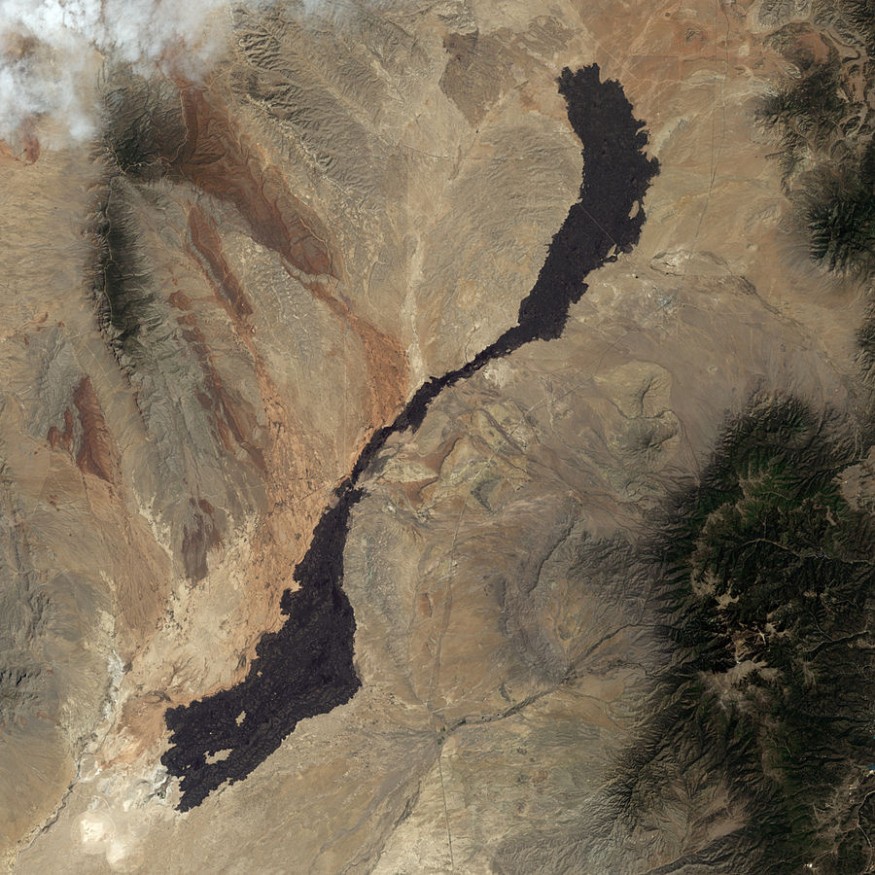An ancient lava in a desert in New Mexico, United States, resembled an elongated black scar as seen from space.
This is based from an astronaut from the International Space Station (ISS) who captured an image of the Carrizozo Malapais lava flow in the state.
The black scar is a solidified lava flow from an ancient volcanic eruption dating back thousands of years ago, covering the once clear landscape.
Carrizozo Malpais is located in the west side of the city of Carrizozo, within the Chihuahua Desert in New Mexico.
The lava flow covers a total land area of 130 square miles (337 square kilometers) and has a length of 50 miles (80 kilometers).
Experts estimated that Carrizozo last erupted 3250 BCE or about 5,000 years ago.
The ancient eruption has long been thought to have given birth to the gigantic lava flow.
Carrizozo Malpais Lava Flow

The Carrizozo Malpais is a basaltic lava flow is characterized as a frozen river of volcanic rock, imprinted in its surrounding desert. It is one of the biggest lava flows that formed on Earth in the last 10,000 years, according to the United States Geological Survey (USGS).
Carrizozo's eruption is not a one-time event, instead it reportedly spans for decades ranging between 20 and 30 years.
During the ancient eruption, magma slowly poured into the ground from a subsurface shield volcano that has become dormant since then.
"Insulated lava tubes" underground has spread the molten rock out over an abnormally large area, the USGS noted.
In particular, all of the lava seen in the black scar came from a vent called "Little Black Peak" on the northern end.
The vent lies inside a zone of crustal weakness named the Capitan lineament, where magmas can rise through the Earth's crust and erupt on the surface, the US agency explained.
The image above does not represent the latest photo of the Carrizozo Malapais lava flow.
Details about the new images taken by the unidentified astronaut from the Expedition 67 of the ISS on June 30 are available on the website of NASA Earth Observatory, released on Monday, September 26.
Little Black Peak
Majority of the lava in Carrizozo emerged from the said vent.
However, there is an uneven, textured appearance of the frozen lava as a result of light scattering off fissures, depressions, and collapses, according to the Earth Observatory, as cited by Live Science.
Despite the seemingly treacherous terrain and environment of the lava flow, a main road and railway bisect the ancient lava field's northern end.
Furthermore, the lava field reportedly seems lifeless but NASA said that a number of desert plant species, such as prickly pear cactuses, perennial flowers, and juniper trees, can grow in the frozen magma.
While the initial volcanic eruption of the Carrizozo Malpais lava flow likely emitted hazardous volcanic materials, it does not follow that the black scar is causing any evident environmental repercussions.
Related Article: Lava Flows from Spanish Volcano After Crater Collapse
© 2026 NatureWorldNews.com All rights reserved. Do not reproduce without permission.





